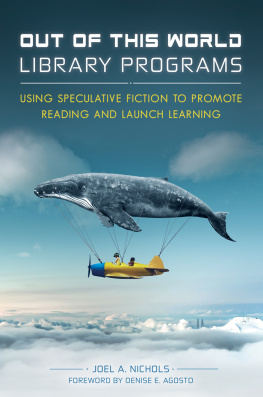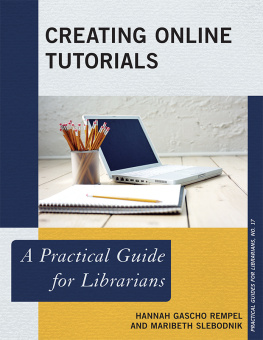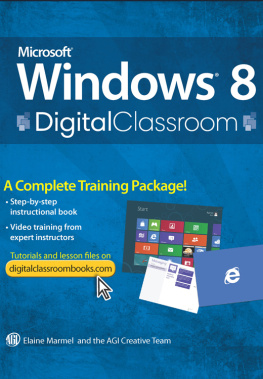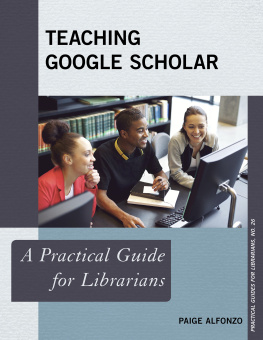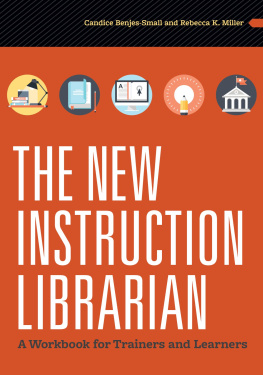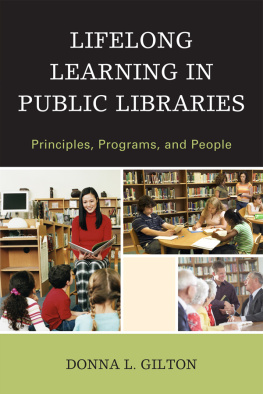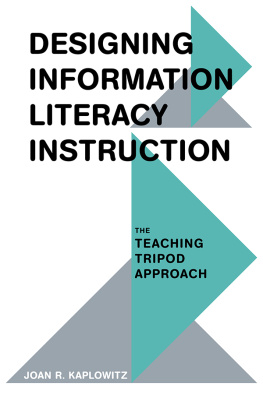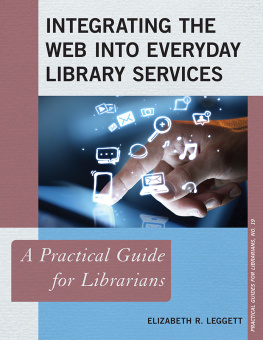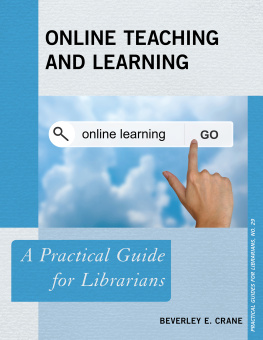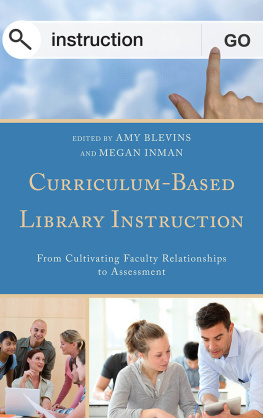Teaching Internet Basics
TEACHING
INTERNET BASICS
The Can-Do Guide
Joel A. Nichols
Copyright 2014 by Joel A. Nichols
All rights reserved. No part of this publication may be reproduced, stored in a retrieval system, or transmitted, in any form or by any means, electronic, mechanical, photocopying, recording, or otherwese, except for the inclusion of brief quotations in a review, without prior permission in writing from the publisher.
Library of Congress Cataloging-in-Publication Data
Nichols, Joel A.
Teaching Internet basics: the can-do guide / Joel A. Nichols.
pages cm
Includes bibliographical references and index.
ISBN 978-1-61069-741-5 (pbk.) ISBN 978-1-61069-742-2 (ebook)
1. InternetStudy and teaching. 2. Internet literacyStudy and teaching. I. Title.
ZA4201.N53 2014
004.67'8071dc23 2014024060
ISBN: 978-1-61069-741-5
EISBN: 978-1-61069-742-2
18 17 16 15 14 1 2 3 4 5
This book is also available on the World Wide Web as an eBook.
Visit www.abc-clio.com for details.
Libraries Unlimited
An Imprint of ABC-CLIO, LLC
ABC-CLIO, LLC
130 Cremona Drive, P.O. Box 1911
Santa Barbara, California 93116-1911
This book is printed on acid-free paper 
Manufactured in the United States of America
Contents
I like to dig deep into the statistics surrounding the digital divide.
I sometimes hope that by looking at the numbers, Ill gain some understanding into how people dont know things.
I dont mean this in a strictly epistemological sense, but more in a social sense. I grew up with technology, even back in the 1980s when this was a little unusual. So similar to the myths that were told about this recent born digital generation, I have a hard time remembering a time before I knew what a computer was. I can still mostly remember learning how to type, how to send an email, how to format a document, and how to build a website. I use most of those skills every week. All of them have become part of my professional as well as my personal life. I cant imagine not being able to do these things.
And yet, when I am teaching technology to my neighbors in Central Vermont, I meet people who dont know the difference between a monitor and a computer (not always obvious!), or email and a website (they used to be more different!), or Facebook and a blog (not even sure I could explain that one!). And I think that knowing more about how people dont know these things, understanding what they do know, and how they form new technological understandings from that, might help me help them.
Nichols has written a book that addresses a need in libraries. For many of us, helping patrons with technology, while we may have only slightly more understanding of it than they do, is a challenging task.
And for patrons who may be coming to technology later in lifewhether they are people who didnt learn about computers in school, who are learning disabled, who are from other countries, or who just never got around to itteaching technology isnt just about the technology. It can also be about mastering fear, or hand-eye coordination, or step-by-step processes, or just venturing into the unknown. So its not just like learning to ride a bike where theres basically a set of steps and you practice until you get it right. Though that helps.
What Nichols has created are class examples that educators can use that include vocabulary, pre-class set-up information, simple class outlines, and actual projects that students can do within an allotted period of time. Lessons are explained clearly and Nichols takes the time to not just outline the concepts (to teachers who will be explaining them in classes) but offer some accessible explanations of what could go wrong and, best of all, what to do about it if it does.
The most useful parts of this book are simple scripts that can be used to break down even simple concepts into metaphors that students will be able to grasp. Concepts like What is a login? and How do I choose a password? are addressed in nonthreatening and nonjargony ways that will work well in a library instruction environment. I think many educators will look at these lesson plans and think This is what I have been looking for!
There are many complex and interrelated factors that have created the digital divide and it certainly wont be solved with another website, or maybe even with another book. This book is an earnest, straightforward, and well put together collection of things that will help move the ball down the field. The digital divide may never truly be eradicated, at least not in the short term, but with tools like these, we can hope to lessen its effects for both our patrons and our staff.
Jessamyn West
Vermont
Digital-literacy instruction is one of the major job duties of 21st-century librarians, whether we like it or not. Patrons who have never touched a computer before come to librarians to ask for help accessing a web page to pay a bill. Teenagers who seem savvy on smartphones end up at a reference desk trying to figure out how to attach their resume in .rtf format. And we are even called on by more advanced users to help with any number of specific tasks: how do I center this picture on a PowerPoint slide? How can I change the name of my Twitter account or revise the security settings on my Tumblr? With no end in sight to what problems library users might have accessing the Internet, librarians need a hands-on and practical guide to approachingand solvingthese digital-literacy instructional challenges. This manual is meant for the librarian who only reluctantly or with some difficulty is teaching computer and Internet basics to patrons with little or no experience. For them, it is a packaged solution with ready-made training scripts and practical examples. It can also be used as a reference for one-on-one coaching situations, where the librarian helps a patron with a specific problem. For more advanced practitioners, this guide will serve as a compendium of basic digital-literacy techniques and approaches. Most librarians will find themselves in between these poles, and this manual gets them up to speed with the latest digital-information needs of users, fills gaps in their own knowledge and experience, and provides a solid and ready-made curriculum to start providing this instruction. Little of this contentand few of these problemsexisted when many of us were training in library school, and this cutting edge guide is intended to help.
The Internet. The World Wide Web. The information superhighway. The cloud. All of these names all refer to different aspects of the same thing: a vast network of interconnected computers all over the world. They are connected by telecommunications lines: phone lines, fiber optic cables, satellite links, cables, and other wired and wireless methods. Being connected means that they can share information electronically. The information shared online is translated into computer language, and then can be sent or accessed anywhere in the world. (Or even in orbit! The International Space Station is also online.)
Digital information is a vague term that can cover anything you access online. It could be any text, photograph, video clip, music file, software programs, data sets, and so on. It refers to anything from banking data to actual online currencies you can use to pay bills. It is necessarily broad. Dont worry about understanding or conveying every example of what digital information is to library customersmost of them already have a general idea, as you do.


